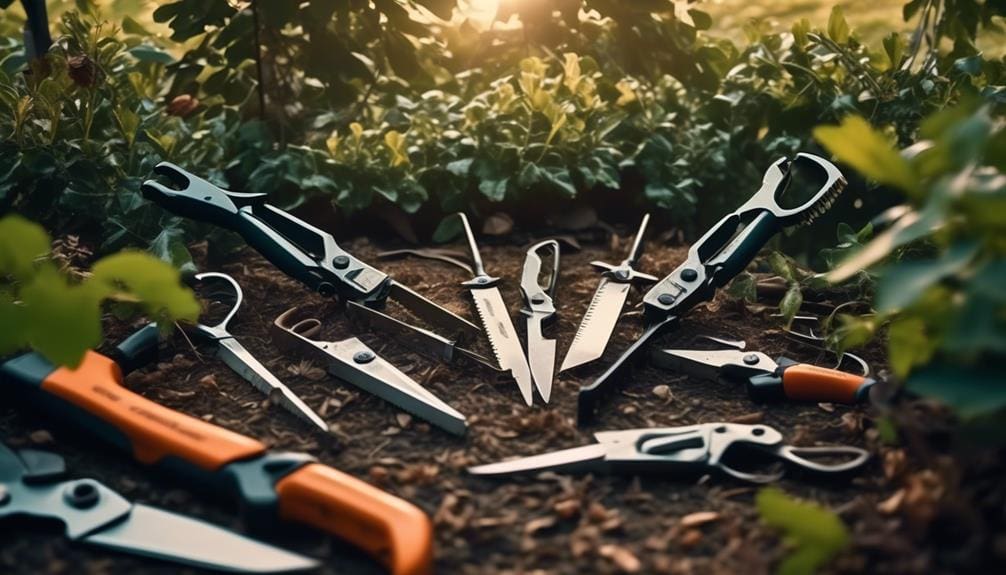Tree Trimming
Trim Smart: Secrets of Deciduous Care
As gardeners, we often find ourselves standing before our leafy charges, shears in hand, pondering the age-old question: to cut or not to cut? We’ve all experienced the trepidation that comes with making that first snip, knowing well that the health and beauty of our deciduous companions hang in the balance.
We’re here to share the secrets of ‘Trim Smart,’ a method that demystifies the art of pruning, ensuring you can approach the task with confidence and precision. With insights from Jessica Friis, a seasoned horticulturist from the Cheyenne Botanic Gardens, we’re equipped to guide you through understanding growth cycles, the selection of tools, and the mastery of techniques tailored for the High Plains’ unique challenges.
But before we reveal how to make each cut count, let’s consider why a well-timed trim is more than just a cosmetic affair—it’s a vital contribution to your garden’s legacy.
Key Takeaways
- Understanding the growth cycles of deciduous trees is essential for making informed decisions about tree care.
- Pruning during the dormant season, late autumn and winter, promotes better light penetration and air circulation.
- Prune dead branches and follow the 4 Ds: Dead, Damaged, Diseased, Deranged.
- Choosing the right pruning tools, such as pruning shears, loppers, pruning saws, and pole pruners, is important for efficient and safe pruning.
Understanding Deciduous Growth Cycles
To grasp how deciduous trees thrive, it’s crucial to recognize their annual growth cycles, which start with leaf shedding in fall to conserve resources for the colder months ahead. As we welcome early spring, these trees burst into life, signaling the start of the growing season. New growth emerges, setting the stage for next year’s vigor.
Pruning deciduous trees during the dormant season, before this burst of activity, is vital. It encourages better light penetration and air circulation within the canopy, fostering robust health. By understanding these cycles, we’re better equipped to make informed decisions about tree care.
Our actions align with their natural rhythms, ensuring that our trees remain free to reach their full potential, year after year.
Selecting Pruning Seasons
We must carefully select the appropriate season for pruning, as timing is key to the health and blooming success of our shrubs and trees. Pruning is important for maintaining plant structure, promoting healthy growth, and ensuring a vibrant display of blooms.
Here’s a rule of thumb to guide us:
- Best Time for Deciduous Trees: Late autumn and winter when they’re dormant.
- Best Time for Evergreens: Spring, preferably March or April.
- Time for Pruning Flowering Shrubs: Right after they bloom to avoid cutting off next season’s buds.
- Pruning Cuts for Health: Remove dead branches and follow the 4 Ds—Dead, Damaged, Diseased, Deranged.
- Seasonal Pruning Freedom: Choose a time that minimizes harm and maximizes growth potential.
Choosing Pruning Tools


Having established the optimal seasons for pruning, let’s now focus on the essential tools required to perform the task efficiently and effectively.
Pruning shears are perfect for snipping small branches and twigs, while loppers tackle the thicker branches with ease. When confronting larger limbs, a pruning saw becomes indispensable. For high or hard-to-reach areas, nothing beats the reach of a pole pruner.
Always ensure our pruning tools are sharp and well-maintained. This isn’t just for efficiency; it’s for safety reasons, too. Clean cuts aid in rapid healing, reducing the need for wound dressing. We choose tools with ergonomic handles to make our work comfortable and to maintain our freedom to maneuver without strain. If in doubt, we consult a certified arborist, especially when dealing with complex issues like crossing branches.
Mastering Pruning Techniques
Mastering pruning techniques, such as thinning and heading back, is essential for shaping and renewing shrubs to maintain their health and aesthetic appeal. Whether we’re aiming to prune trees for better fruit production or control the size of a mock orange, the right approach is key.
Let’s focus on these techniques:
- Thinning: Removes older branches to improve light and air flow.
- Heading Back: Encourages denser growth and helps produce flowers.
- Rejuvenation: Cuts plants back to ground level to promote new growth.
- Shearing: Shapes hedges and formal gardens quickly.
- Pinching: Directs energy to desired areas, particularly useful for fruit trees.
Tree pruning isn’t just about aesthetics; it’s a way to ensure our plants live freely, thriving in their environment.
Prioritizing Safety Measures


Before delving into the heart of pruning practices, it’s crucial to emphasize the importance of safety measures, such as donning protective gear and using well-maintained tools, to prevent accidents and ensure a successful gardening experience.
We always wear protective gloves and goggles to shield ourselves from harm. Our tools are sharp and clean, promoting precise cuts and deterring infections. When tackling a tree or hedge, especially those around the trunk or the size of a shrub, we’re mindful of overhead lines, ensuring we’re clear of them. We survey our surroundings for hazards like unstable branches and uneven terrain. If we’re 35 feet up or more, we make sure our ladders are steadfastly secure.
Pruning in winter or early spring means the plants demand less food, making it safer for us and less stressful for them. This annual ritual keeps our green friends thriving.
Conclusion
In conclusion, we’ve uncovered the pivotal role pruning plays in deciduous tree health and aesthetics. By selecting the right season, tools, and techniques, we ensure our trees thrive.
Remember, safety is paramount; always prune with care. With the insights from Jessica Friis and ‘Trim Smart,’ we’re now equipped to tackle High Plains gardening challenges with confidence.
Let’s put our knowledge to the test and watch our gardens flourish.
Happy pruning, fellow green thumbs!


Hello there! I’m Logan Foster, the green-thumbed social media marketer behind the vibrant world of 1800TreeGuy.com. With roots firmly planted in arboriculture, I’ve branched out to help clients cultivate their dream outdoor spaces, one leafy canopy at a time. My knack for nurturing nature is more than a profession—it’s a way of life.
When I’m not talking trees and teaching the art of arboreal care, you can find me cheering on the Bulldogs—my alma mater’s pride and my forever team. My environmental studies there didn’t just teach me about ecosystems; they instilled a lifelong passion for protecting our planet.
Off the clock, I’m an adventurer at heart. Whether it’s trekking the Appalachian trails, pedaling down a mountain path, or crafting guides to share the wonders of the wild, I’m happiest with soil under my nails and the sun on my face. And let’s not forget Yoda, my pug sidekick. He may not have mastered the art of stillness, but his joyful grins are my daily dose of happiness.
I’m all about making connections—between people and the great outdoors and between my clients and their ideal landscape visions. My approach is personal; every tree has a story, and every garden reflects its caretaker.
If you want to green your scene or share in my outdoor escapades, give me a shout on Instagram or Facebook. Let’s cultivate a conversation and grow a community rooted in a love for the lush life.














